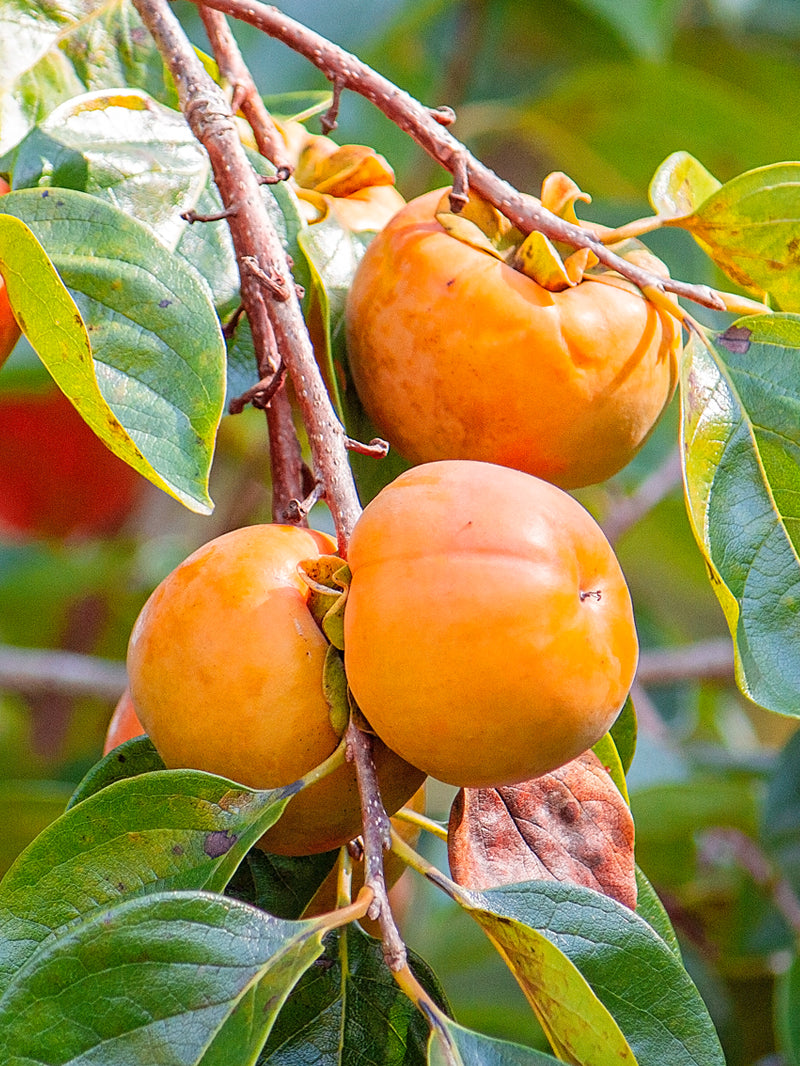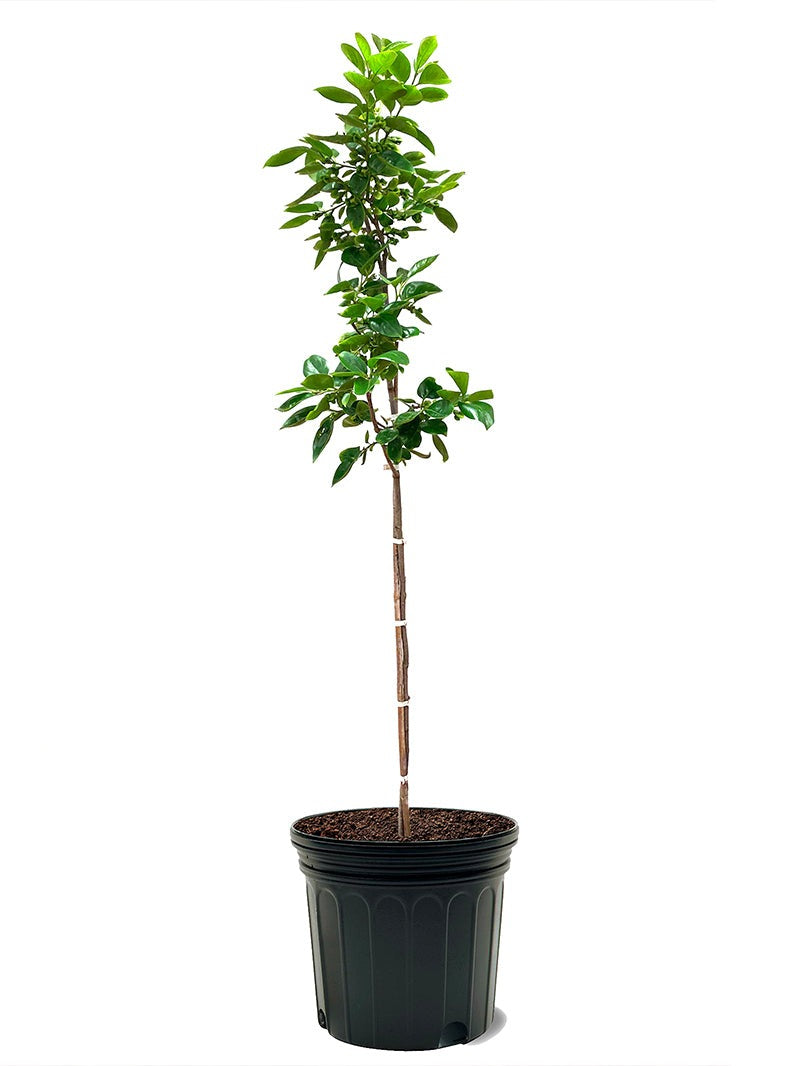Plant Quick Guide
Growing Zones:
Mature Height:
Mature Width:
Sunlight:
Spacing:
Chill Hours:
Growth Rate:
Harvest Time:
Years to Bear:
Pollinator:
Does Not Ship To:
Persimmon Trees - Fuyugaki (Non-Astringent)
USDA Hardiness Zones: 8-9.
Description
The Fuyugaki, or Fuyu, Persimmon is a small deciduous tree that produces medium-large, tomato shaped fruit that tends to have distinct indentations that run up and down the persimmon making it appear almost square. This non-astringent persimmon is deep orange with a light orange flesh, and it ripens in late October or early November. The fruit is sweet and mild and can be eaten fresh or used in jellies and pies. It also keeps well so you can save some for later! Besides the fruit, the Fuyugaki is a good choice because it is pest and disease resistant. The tree grows to 15-20 feet tall and 15-20 feet wide. It requires full sun to partial shade and well drained soil. It is semi-self pollinating. We graft the Fuyugaki persimmon onto native American persimmon root stock.
USDA ZONES: Zone 8, Zone 9.
More Information: Persimmon Growing Guide
Shipping

At Plant Me Green we handle, package and ship the products you order with the utmost care. We ship your plants using FedEx Ground® the following business day after you have completed checkout.
We are now offering $15 flat rate shipping for all tree orders! Replacement tree shipping cost will be $15 per box. We still cannot ship to some states and US territories based off the Agricultural Laws that may be in place. Please see below for all exclusions.
If you have any questions concerning transit time for your order, please feel free to contact us at info@plantmegreen.com or toll free 855-817-5268.
Trees: Due to strict Agricultural Laws in place, we currently cannot ship to the following states: Alaska, Arizona, California, Hawaii. We cannot ship to Puerto Rico or international.
How to Plant

STEP 2) Once you've located the perfect spot, the hole you are digging must be at least double the width and as deep as the root system you are planting.
STEP 3) Remove the plant from the pot and place the root ball in the hole. The top of the root system should be level with the ground. Before placing the tree or shrub in the hole, use your hands to gently break up the root system.
STEP 4) Once the plant is in place, backfill the hole with native soil and any leftover potting material.
STEP 5) Pack down the soil to eliminate any air pockets.
STEP 6) When finished, water thoroughly.
Care Guide












